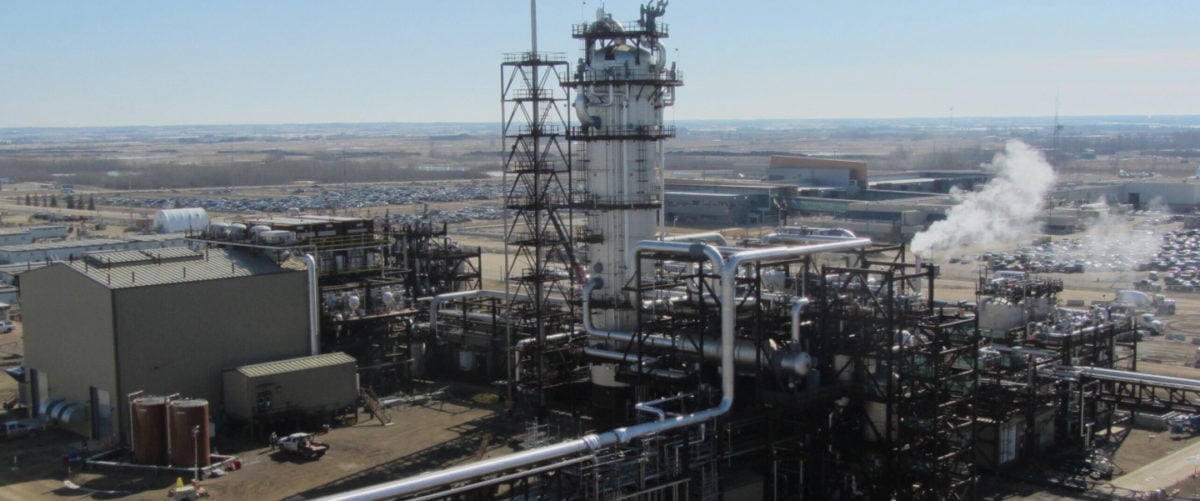Top 5 Reasons Carbon Capture And Storage (CCS) Is Bogus
Published Jul 20, 2021

Industry advocates peddle CCS as the latest and greatest shortcut to curbing emissions from fossil fuels. It’s a red herring.
The idea of using technology to take carbon out of the air may at first blush sound like an attractive solution to our escalating climate crisis. But if you examine the details, the carbon capture “solution” is a mirage.
Betting on carbon capture as a primary solution to the climate crisis is essentially the same as giving up. The only solution is to rapidly transition to 100% renewable energy, combined with energy efficiency and a less energy-intensive food system.
Recently, carbon capture has been getting a lot of attention. It is a centerpiece of the oil and gas industry’s greenwashing efforts. The White House includes it as part of its climate agenda. Even some progressive media figures have promoted carbon capture and encouraged the left to embrace it as a so-called solution.
But as attractive as it may sound in theory, there are many good reasons to reject this failed, energy-intensive, so-called solution. Carbon capture will lock us into decades more of fossil fuels, and it is not feasible at scale. What’s more, it diverts money and political attention from the real, bold solutions we need.
Here are five reasons why embracing carbon capture is a fool’s errand.
1. Carbon Capture Is an Expensive Failure
After billions of dollars in public and private investments over decades, there are no carbon capture success stories — only colossal failures. One of the largest was the Petra Nova coal plant in Texas, once the poster child for CO2 removal. But the plant consistently underperformed, before it finally closed for good last year.
Another high-profile example — the San Juan Generating Station in New Mexico, touted as the largest capture project in the world — may already be headed to a similar fate.
Between 2005 and 2012, the U.S. Department of Energy spent $6.9 billion to try to demonstrate the feasibility of CCS for coal. However, little came of this investment.
From 2014 to 2016, less than 4% of the planned CCS capacity had been deployed. The Biden administration wants to shift its focus to carbon capture for gas-fired power plants. Yet, there’s no reason to think the outcome will be any different.
2. Carbon Capture Is Energy Intensive
Running a carbon capture system is incredibly energy-intensive. It essentially requires building a new power plant to run the system, creating another source of air and carbon pollution. That undermines the whole goal of capturing carbon in the first place.
Our country emits roughly 5 billion tons of carbon into the atmosphere every year. Removing 1 billion tons of that through direct air capture would require nearly the entire electricity output of the United States.
It’s also important to consider the scale of what would be needed. The Energy Department recently announced $12 million to fund “direct air capture” projects. It also touted the possible removal of 100,000 tons of carbon dioxide from the atmosphere.
To put this in perspective, the largest corporate polluter in 2018 was responsible for releasing 119 million tons of CO2 equivalent — and that’s only one of them.
3. Carbon Capture Actually Increases Emissions
Due to the large amount of energy required to power carbon capture, plus the life cycle of fossil fuels, carbon capture in this country has actually put more CO2 into the atmosphere than it has removed.
That’s not an accident. “Succesful” capture projects only exist at facilities where the carbon is injected into existing wells to extract more oil. This practice is known as “enhanced oil recovery.” While an oil company CEO might argue that doubling down on fossil fuels is a climate solution, the planet begs to differ.
4. Storage Presents Significant Risks
There are also other significant risks related to the disposal and storage of carbon. For example, well failure during injection or a blowout could result in a release of large amounts of CO2. Storage locations can leak CO2, as they are often sited near fossil fuel reservoirs. There, oil and gas wellbores provide a pathway for CO2 to escape to the surface. Those storage leaks could contaminate groundwater and soil. Moreover, CO2 injections could cause earthquakes, which have already been measured at injection sites.
As Friends of the Earth noted recently, when a CO2 pipeline in a majority Black community in Mississippi ruptured last year, residents had to seek medical treatment. The incident also killed local plants and wildlife.
5. Carbon Capture Trades Off With Other Critical Solutions
Wishful thinking about carbon capture isn’t just an ineffective response to the climate crisis — it’s dangerous. We have a small window where we can take the bold action needed to avert runaway climate chaos. Counting on carbon capture’s effectiveness squanders the opportunity to enact actual emissions reductions (a phenomenon known as “mitigation deterrence“).
The reason that the oil and gas industry loves carbon capture is simple: It extends the fossil fuel era instead of ending it.
Already, dirty energy companies are pitching the construction of new pipelines and fracked gas power plants. They’re also making totally empty promises about their ability to install capture technology to make this polluting infrastructure “clean.”
If carbon capture continues to fail, it doesn’t matter much to the company running the dirty power plant. They will just continue on with business as usual.
So long as fossil fuel companies, government officials, and even some progressive advocates are fooled by carbon capture, there will be less pressure to actually stop climate pollution by putting an end to drilling and fracking. The carbon capture mirage will block any hope for the political will needed for a rapid and just transition to 100% renewable energy.
Your friends need to read this.
Enjoyed this article?
Sign up for updates.
TO TOP


